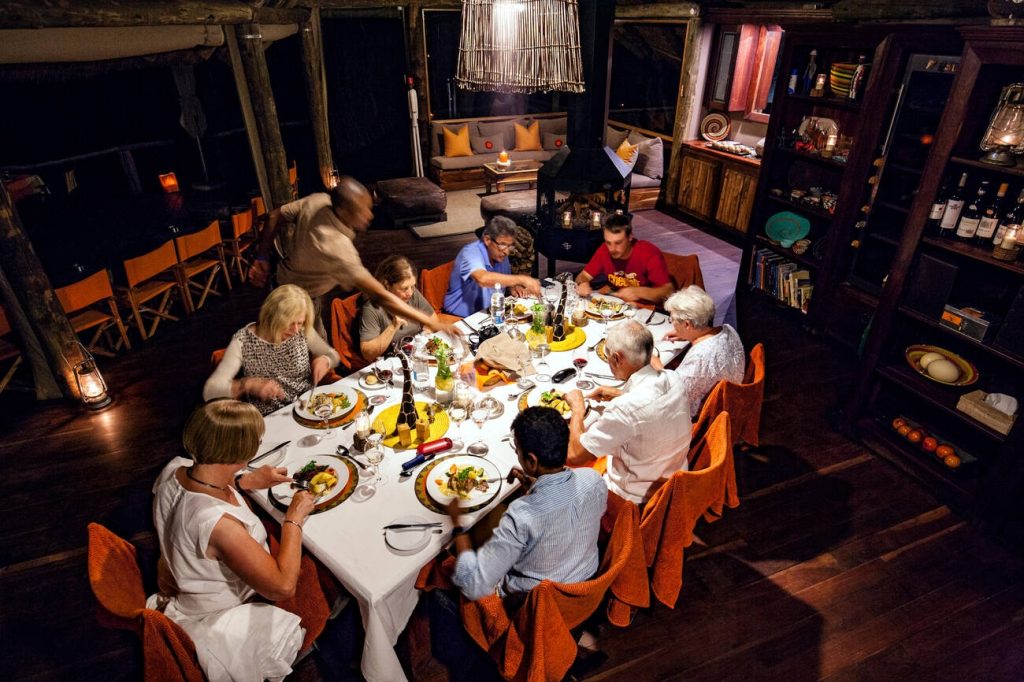Are you ready to uncover the hidden treasures of Spanish red wine? In this article, we invite you to delve into the diverse regions of Spain and discover the finest red wines they have to offer. From the prestigious Ribera del Duero to the renowned Rioja and Catalonia, each region has its own unique flavors and characteristics waiting to be explored. You’ll learn about the prominent grape varietals that define the Spanish red wine landscape, such as Tempranillo, Garnacha, and Monastrell. We’ll also delve into the influence of terroir and climate on the quality and style of these wines. Whether you’re a seasoned wine enthusiast or just starting your journey, this article will provide valuable insights into the best Spanish red wines from different regions. So come along and savor the rich flavors of Spain’s finest red wines.
Contents
- Ribera Del Duero: Second-Highest Wine Classification in Spain
- Rioja: Diverse Soils and Tempranillo-Based Blends
- Castilla Y Leon: Dominated by Tempranillo Grape
- Galicia: Sunny but Rainy Climate
- Catalonia: Diverse Wine Production and Bordeaux-Influenced Varieties
- Valencia: Home to Various Sub-Regions and Red Wine Styles
- Castilla-La Mancha: Hot Region Known for Tough Grapes
- Aragon: Continental Climate and Known for Grenache
- Navarra: Northern Region With a Variety of Red Wine Styles
- Spanish Red Wine Grape Varietals: Tempranillo, Garnacha, Monastrell, Cariñena, Bobal, Mencia, Manto Negro
- Spanish Red Wine Terroir and Climate: Diverse Climates and Geographical Features
- General Information About Spanish Red Wine: Spain’s Long Winemaking History and Depth of Grape Varieties
Ribera Del Duero: Second-Highest Wine Classification in Spain
If you’re looking for the best Spanish red wine, you should explore Ribera del Duero’s second-highest wine classification in Spain. This region, located in Castilla y Leon, is renowned for its exceptional wines and is home to the important Tinto Pesquera. Known for its deep, rich flavors and impeccable craftsmanship, Tinto Pesquera is a true representation of the quality and tradition of Ribera del Duero.
One factor that sets Ribera del Duero apart is the influence of the Cantabrian Mountain Range, which protects the region from the Atlantic Ocean and creates a unique microclimate. This microclimate, along with the high elevation and the Duero River, contributes to the distinctive character of the wines produced here.
While Ribera del Duero shines with its Tempranillo-based blends, other regions in Spain have also gained recognition for specific grape varietals. Catalonia, for example, has seen the rise of Grenache, which has become a prominent grape in the region’s winemaking. Valencia is known for the unique characteristics of Monastrell, a grape that thrives in the region’s warm climate. Aragon, with its continental climate, produces exceptional Grenache wines that showcase the impact of the terroir on the grape.
When exploring Spanish red wines, Ribera del Duero stands out as a region of distinction. Its second-highest wine classification, along with the importance of Tinto Pesquera and the influence of the Cantabrian Mountain Range, make it a must-visit for wine enthusiasts seeking the best Spanish red wines.
Rioja: Diverse Soils and Tempranillo-Based Blends
Rioja, another esteemed Spanish red wine region, offers a diverse range of soils and is known for its exceptional Tempranillo-based blends. The wines from this region have a remarkable aging potential, thanks to the perfect combination of the grape variety and the oak influence. Here are three reasons why Rioja stands out among Spanish red wine regions:
- Aging Potential and Oak Influence: Rioja wines have a unique ability to age gracefully, developing complex flavors and aromas over time. This is due in part to the extended aging in oak barrels, which adds layers of depth and character to the wines.
- Ribera del Duero: While Rioja is renowned for its Tempranillo-based blends, Ribera del Duero is another Spanish region that excels in producing exceptional wines from this grape variety. Some notable examples include Tinto Pesquera Crianza and Dominio del Aguila Reserva.
- Castilla y Leon: This region, which includes Ribera del Duero, offers a wide range of wines at different price points. From value wines to premium selections, Castilla y Leon has something to offer every wine enthusiast. Quinta Sardonia and Raul Perez Ultreia Valtuille are highly recommended wines from this region.
Rioja’s diverse soils and Tempranillo-based blends make it a must-visit destination for wine lovers.
Castilla Y Leon: Dominated by Tempranillo Grape
When exploring the Spanish red wine region of Castilla y Leon, you will discover a dominantly Tempranillo grape varietal. Tempranillo’s influence in Castilla y Leon is undeniable, as it thrives in the region’s warm and dry climate. This grape variety is known for producing wines with a deep ruby color, medium to full body, and flavors of ripe red fruit, leather, and spice. Notable wineries in Castilla y Leon, such as Quinta Sardonia and Raul Perez Ultreia Valtuille, showcase the incredible potential of Tempranillo in this region.
In comparison to other grape varieties in Castilla y Leon, Tempranillo stands out for its ability to age gracefully. These wines often benefit from bottle aging, developing complex flavors and a smooth, velvety texture over time. With proper cellaring, Castilla y Leon wines made from Tempranillo can easily age for a decade or more, revealing layers of complexity and depth.
When it comes to food pairing, Castilla y Leon red wines, particularly those made from Tempranillo, pair beautifully with a variety of dishes. The wines’ medium to full body and balanced acidity make them a versatile choice for pairing with grilled meats, roasted vegetables, and aged cheeses. The rich flavors and tannic structure of Tempranillo complement hearty dishes like lamb stew or beef tenderloin, while the vibrant acidity cuts through the richness of fatty cuts of meat.
Galicia: Sunny but Rainy Climate
In Galicia, a region in northwestern Spain, the sunny but rainy climate contributes to the unique characteristics of its Spanish red wines. The combination of ample sunshine and abundant rainfall creates the perfect conditions for grape cultivation, resulting in wines with distinct flavors and aromas. Here are some key aspects of Galician red wines:
- Winemaking techniques: Galicia is known for its traditional winemaking techniques, which enhance the quality and complexity of the wines. The use of oak barrels for aging adds depth and richness to the flavors.
- Indigenous grape varieties: Galicia is home to several indigenous grape varieties, including Mencía, Garnacha Tintorera, and Sousón. These grapes thrive in the region’s specific climate and contribute to the unique character of Galician red wines.
- Notable wineries: Bodegas Ordonez and A Coroa Ladeira Vella are renowned wineries in Galicia, producing exceptional red wines that showcase the region’s terroir and winemaking expertise.
When it comes to food pairing, Galician red wines are versatile and pair well with a variety of dishes. The robust flavors and balanced acidity make them a perfect match for grilled meats, hearty stews, and aged cheeses. Whether you’re enjoying a glass on its own or pairing it with a delicious meal, Galician red wines are sure to impress with their depth, complexity, and unique expression of the region’s sunny but rainy climate.
Catalonia: Diverse Wine Production and Bordeaux-Influenced Varieties
If you’re a wine enthusiast, you may frequently encounter the diverse wine production and Bordeaux-influenced varieties found in Catalonia. Catalonia is known for its vibrant wine industry, producing a wide range of Spanish red wines that showcase the region’s unique terroir and winemaking traditions. The influence of Bordeaux can be seen in Catalonia’s winemaking techniques and grape varietals, adding depth and complexity to the wines.
Catalonia boasts several renowned wine regions, including Monsant and Priorat, which are famous for their bold and powerful red wines. Grenache and Carignan are prominent grape varieties in these regions, contributing to the rich and intense flavors that Catalonia is known for. The region’s diverse wine production also encompasses other Spanish red wine grape varietals, offering a wide array of flavors and styles to choose from.
Catalonia’s wine production plays a significant role in Spain’s overall wine exports. The region’s high-quality wines contribute to Spain’s reputation as a leading wine exporter, with the United States, the United Kingdom, Germany, and Canada being major destinations for Spanish red wines. Catalonia’s commitment to producing exceptional wines that showcase the unique characteristics of the region has made it a favorite among wine lovers worldwide.
When exploring the wines of Catalonia, it is helpful to familiarize yourself with the Spanish wine language. Understanding terms for different wine types, dryness levels, and aging classifications will enhance your appreciation of Catalonia’s diverse wine production. By delving into the world of Catalonia’s wine production and Bordeaux-influenced varieties, you will discover a treasure trove of Spanish red wines that exemplify the region’s rich winemaking heritage.
Valencia: Home to Various Sub-Regions and Red Wine Styles
Continuing from the previous subtopic, let’s explore Valencia, a region in Spain that is home to various sub-regions and red wine styles. Valencia is a vibrant and diverse wine region that offers a unique and exciting experience for wine enthusiasts. Here are some key highlights:
- Valencia Sub-Regions: Valencia is divided into several sub-regions, each with its own distinct characteristics and styles. From the coastal plains of Alto Turia to the mountainous terrain of Clariano, Valencia offers a diverse range of terroirs that contribute to the complexity of its wines.
- Popular Red Wine Styles in Valencia: Valencia is known for producing a wide range of red wine styles. The region is particularly renowned for its bold and full-bodied Monastrell wines, which showcase rich fruit flavors and a robust structure. Additionally, Valencia is also home to delicious Bobal wines, which display vibrant acidity and intense red fruit aromas.
- Notable Red Wines from Valencia: Valencia boasts several notable red wines that have gained recognition both locally and internationally. Some standout examples include El Seque, a powerful and elegant Monastrell wine from the sub-region of Alicante, and Finca Terrerazo, a complex and age-worthy Bobal wine from the sub-region of Utiel-Requena.
- Unique Characteristics of Valencia Wines: Valencia wines are characterized by their boldness, intensity, and vibrant flavors. The region’s warm climate and diverse terroirs contribute to the development of ripe and concentrated fruit flavors, while the Mediterranean influence brings a freshness and balance to the wines.
- Vineyard Practices in Valencia: In Valencia, vineyard practices focus on sustainability and preserving the natural environment. Many wineries in the region embrace organic and biodynamic farming methods, ensuring that the grapes are cultivated in harmony with nature. This commitment to sustainable viticulture contributes to the overall quality and purity of Valencia wines.
Valencia offers a captivating wine experience, showcasing the region’s unique terroirs and the skillful craftsmanship of its winemakers. Whether you’re a fan of bold and powerful wines or prefer more elegant and nuanced styles, Valencia has something to offer for every wine lover.
Castilla-La Mancha: Hot Region Known for Tough Grapes
Explore Castilla-La Mancha, a hot region in Spain known for its tough grapes. Castilla-La Mancha faces hot climate challenges that test the resilience of its grape varieties. Despite the harsh conditions, this region has notable producers who have mastered the art of winemaking. The unique wine styles that emerge from this region are a testament to the terroir influence.
One of the defining characteristics of Castilla-La Mancha is its tough grape varieties. Bobal, Grenache, and Monastrell are popular varietals that thrive in the region’s arid and scorching climate. These grapes have developed a remarkable ability to withstand the intense heat and produce wines with depth and complexity.
The hot climate challenges in Castilla-La Mancha require skilled winemakers to adapt their techniques to ensure the grapes reach their full potential. Notable producers in the region have mastered the art of balancing the ripeness of the grapes with acidity, resulting in wines that are both rich and vibrant.
The unique wine styles of Castilla-La Mancha reflect the terroir influence of the region. The intense heat and dry conditions produce wines with concentrated flavors and robust tannins. These wines often exhibit notes of ripe fruits, spices, and earthiness, making them both distinctive and enjoyable.
Aragon: Continental Climate and Known for Grenache
Now let’s delve into Aragon, a region known for its continental climate and its reputation for producing exceptional Grenache wines. Aragon’s Grenache wines are a true reflection of the region’s continental climate influence, which brings hot summers and cold winters. This climate creates the perfect conditions for Grenache grapes to thrive and develop their unique flavors.
When exploring Aragon’s Grenache wines, it’s worth noting the notable wineries that have made a name for themselves in the region. Bodegas Breca is one such winery, known for its high-quality Grenache wines. Their Breca 2019 is a potent and complex wine that showcases the best of Aragon’s indigenous grape varieties.
To fully appreciate Aragon’s Grenache wines, it’s essential to consider the perfect food pairings. These wines pair beautifully with hearty dishes such as grilled lamb chops, braised beef, and roasted vegetables. The bold flavors and rich textures of Aragon’s Grenache wines complement and enhance the flavors of these dishes, creating a truly memorable dining experience.
Navarra: Northern Region With a Variety of Red Wine Styles
With its diverse range of red wine styles, Navarra, located in the northern region of Spain, offers a delightful exploration for wine enthusiasts. Navarra is known for producing a variety of wines that showcase the region’s unique terroir and grape varietals. From rich and full-bodied reds to elegant and fruity rosés, Navarra has something to please every palate.
One of the notable wine styles in Navarra is the Grenache-based rosé. These wines are known for their vibrant pink hue and refreshing acidity. They are perfect for enjoying on a warm summer day or pairing with light seafood dishes.
In addition to rosé, Navarra also produces excellent red wines. Notable wineries in the region, such as Artadi, produce exceptional Grenache wines that showcase the grape’s versatility and complexity. These wines often exhibit bold flavors of ripe red fruit, spices, and a hint of earthiness.
Navarra’s climate and terroir play a significant role in the region’s wine production. The region experiences a continental climate with hot summers and cold winters, which helps to develop the grapes’ flavors and aromas. The diverse terroir, which includes clay, limestone, and alluvial soils, adds complexity to the wines.
When it comes to food pairing, Navarra wines are incredibly versatile. The rosés pair well with a variety of dishes, including grilled vegetables, seafood paella, and charcuterie. The red wines, with their bold flavors, are excellent companions to rich and savory dishes such as roasted lamb, grilled steak, or aged cheeses.
Spanish Red Wine Grape Varietals: Tempranillo, Garnacha, Monastrell, Cariñena, Bobal, Mencia, Manto Negro
As we delve into the world of Spanish red wine grape varietals, it’s important to understand the diverse range of options that contribute to the rich and flavorful wines found throughout the different regions, such as Navarra. Let’s explore the versatility of Tempranillo, the most popular Spanish red wine varietal, which is used in famous wines like Rioja. With its ability to thrive in various climates and produce wines with different characteristics, Tempranillo is truly a versatile grape.
Next, let’s turn our attention to Garnacha, a red wine grape used in various regions of Spain. Known for its unique characteristics, Garnacha wines offer a wide range of flavors that can vary from light and fruity to bold and complex. Whether it’s the elegant expressions of Garnacha in Catalonia or the robust and concentrated styles found in Aragon, exploring the different Spanish regions will reveal the true diversity of this grape.
Moving on, we discover the bold flavors of Monastrell in Valencia and Castilla La Mancha. Also known as Mourvedre, Monastrell produces wines with intense dark fruit flavors, firm tannins, and a rich, full-bodied profile. Its ability to withstand hot climates makes it well-suited for the regions of Valencia and Castilla La Mancha, where it thrives and produces exceptional wines.
Now, let’s talk about Cariñena, a lesser-known grape varietal with great potential in Spanish wines. Although not as widely recognized as Tempranillo or Garnacha, Cariñena offers its own unique character and flavor profile. With its deep color, high acidity, and robust tannins, Cariñena can contribute to the complexity and structure of Spanish red wines.
Lastly, let’s explore Bobal, the native grape of Valencia, and its role in Spanish red wine production. Known for its thick skin and ability to withstand the region’s hot climate, Bobal produces wines with deep color, intense aromas, and a rich, full-bodied palate. Valencia has embraced this indigenous grape and is producing exceptional Bobal wines that showcase its unique characteristics.
Spanish Red Wine Terroir and Climate: Diverse Climates and Geographical Features
Explore the diverse climates and geographical features that contribute to the terroir of Spanish red wines. The impact of terroir and climate on wine characteristics is undeniable, and in the case of Spanish red wines, it plays a crucial role in shaping their profiles. The influence of geographical features on Spanish red wine is evident in the distinct flavors and aromas that each region offers.
Spain boasts climate diversity in its wine regions, with each area having its own unique climatic conditions. From the elevated plateau and the Duero river in Ribera del Duero to the protection from the Atlantic Ocean by the Cantabrian Mountain Range in Rioja, the geographical factors have a significant impact on Spanish red wine production. Castilla y Leon enjoys a warm and dry climate, while Galicia experiences a sunny but rainy climate due to its proximity to the Atlantic Ocean. Catalonia benefits from a sunny Mediterranean climate, and regions like Valencia and Castilla-La Mancha have hot climates.
Terroir, which encompasses the soil, climate, and other environmental factors, plays a crucial role in Spanish red wine production. The geographical characteristics of each region shape the grape varieties that thrive there, resulting in unique flavor profiles. Whether it’s the Tempranillo-based blends in Rioja or the Grenache-dominated wines in Catalonia, the terroir of each region contributes to the distinctiveness of Spanish red wines.
General Information About Spanish Red Wine: Spain’s Long Winemaking History and Depth of Grape Varieties
Spain’s long winemaking history and depth of grape varieties make it a fascinating destination for wine enthusiasts. With a wine history that dates back thousands of years, Spain has established itself as one of the world’s premier wine-producing countries. The country’s diverse regions and climates have given rise to a wide variety of grape varieties, each contributing its own unique flavor profile to Spanish red wines. From the bold and structured Tempranillo of Rioja to the elegant and aromatic Garnacha of Catalonia, Spanish red wine grape diversity is truly impressive.
Spanish red wine production techniques and aging processes also play a crucial role in shaping the flavor profiles of these wines. Traditional methods such as oak barrel aging and extended bottle aging are commonly employed, resulting in wines that are rich, complex, and full-bodied. The aging process allows the wines to develop nuanced flavors and aromas, making them a delight to explore.
When it comes to Spanish red wine flavor profiles, you can expect a wide range of characteristics. From the dark fruit flavors of blackberries and cherries to the earthy notes of tobacco and leather, Spanish red wines offer a sensory experience that is both captivating and satisfying.




